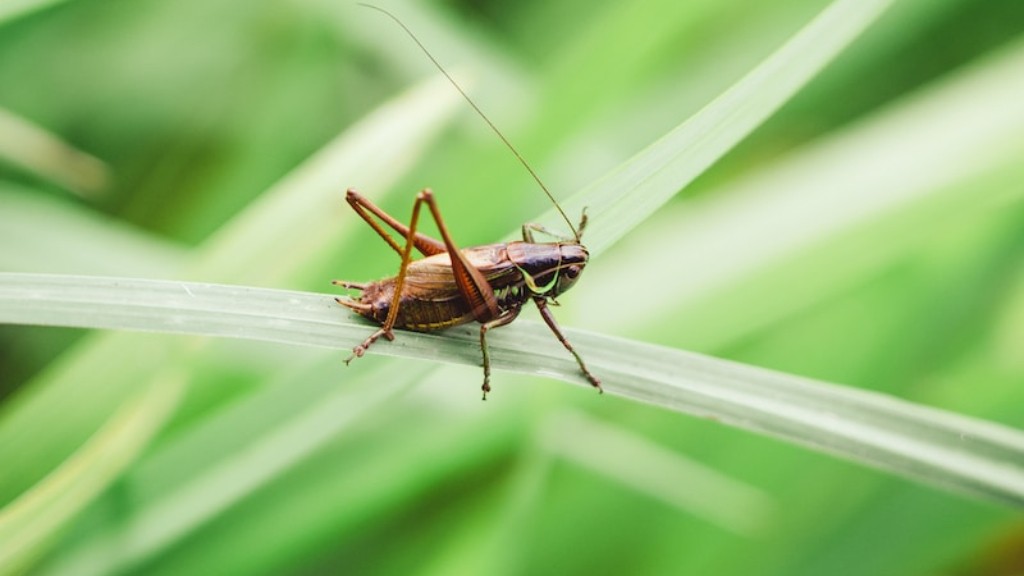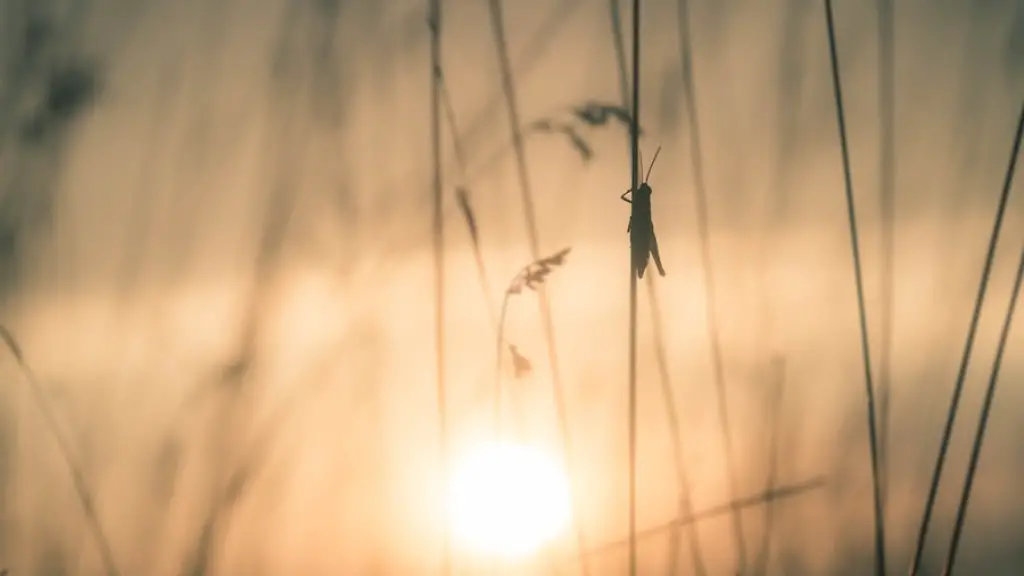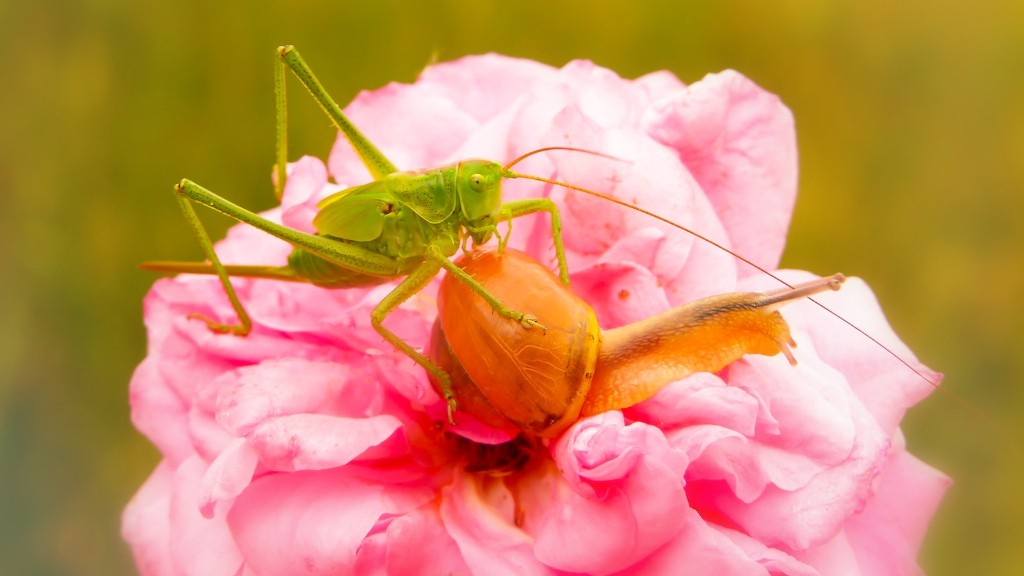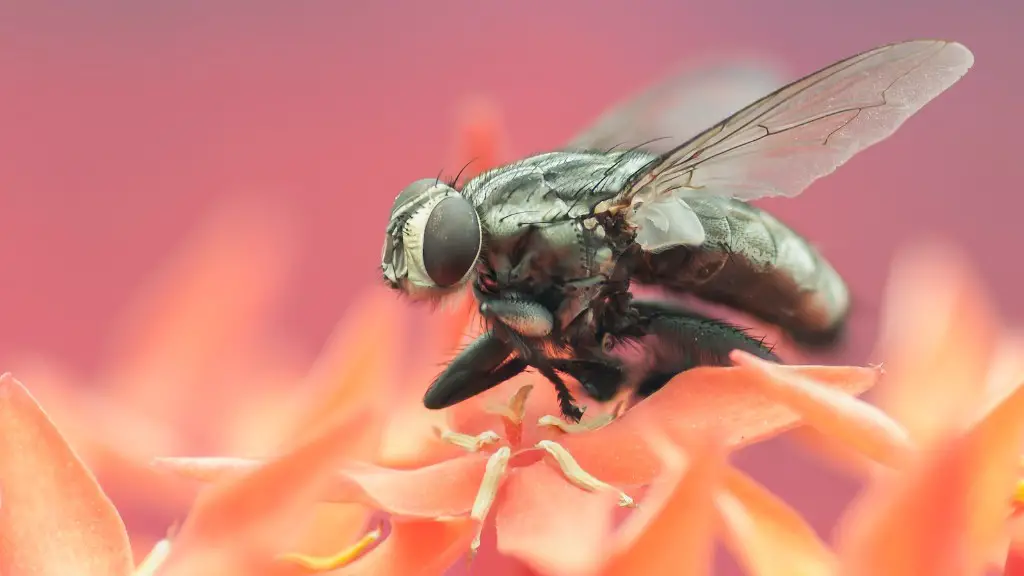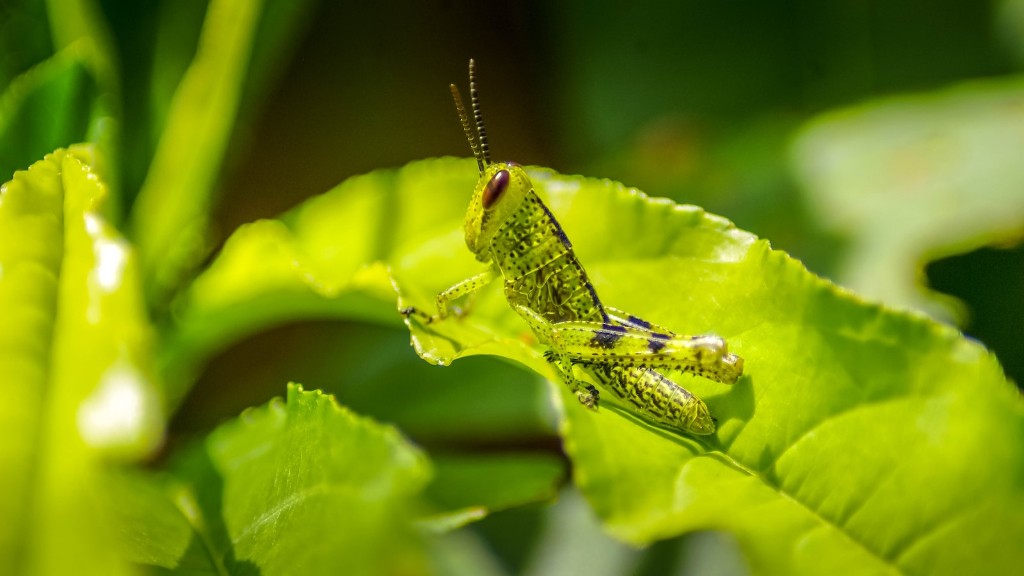Grasshoppers are a type of herbivorous insect that feeding primarily on grasses, but they will also eat other plants, fruits, and vegetables. In captivity, they should be provided with a diet that consists of fresh, green vegetables and fruits, as well as dry grasses or hay. A variety of different vegetables and fruits can be offered, but some favorites include: cabbage, carrots, celery, turnips, squash, zucchini, cucumbers, apples, pears, and watermelon. It is also important to provide a calcium supplement, which can be given in the form of a powder or chewing on a cuttlebone.
A grasshopper in captivity typically eats a diet of fresh vegetables and fruits, along with grass and hay.
What should I feed my pet grasshopper?
Most grasshoppers are herbivores, which means they eat plants. Given a choice of any plant in their environment, grasshoppers seem to prefer crops like rye, barley, cotton, corn, alfalfa, and wheat. However, they will also consume other plant material, including leaves, stems, and flowers.
It is important to provide a variety of food for your grasshopper as they prefer to eat plants in the grass family. These types of plants are the easiest for grasshoppers to digest and, therefore, are their natural preference for food. By giving them a variety of food, you will ensure that they are getting all the nutrients they need to stay healthy.
Can grasshoppers live in captivity
For those interested in keeping insects as pets, grasshoppers offer a good choice as they are inexpensive (even free), don’t require any type of special food, and don’t need much in the way of space or other supplies.
If you are keeping grasshoppers as pets, it is important to keep the humidity low in their enclosure. This can be done by placing dry bedding in the enclosure, such as dry coconut fiber, oatmeal flakes or dry sand. Do not spray the enclosure with water, as grasshoppers do need moisture to survive, but can get this from their food. Lightly spray fresh food with water before feeding it to your grasshoppers.
How long do pet grasshoppers live?
Grasshoppers have a relatively short lifespan, averaging about one year. Most of their life is spent as nymphs, which are immature grasshoppers. They undergo several molts, or shed their skin, as they grow. Once they reach adulthood, they mate and lay eggs. The eggs hatch and the cycle begins anew.
There are more than 100 types of grasshoppers, and they eat all kinds of plants. Some species eat weed plants and grasses with little garden value, while other species feast on vegetable crops, such as lettuce, carrots, beans, and corn, along with prized perennials.
Do grasshoppers drink water?
Grasshoppers get most of the water they need from plants while they are eating. However, they will drink water if it is available.
Some exotic grasshoppers require additional warmth from a reptile heat mat and/or a humid tank. If you are keeping these types of grasshoppers, you will need to increase the humidity as required. This can be done by moistening the substrate and misting the tank with dechlorinated, distilled or bottled water. The water bowl should also be filled with distilled or bottled water.
What vegetables do grasshoppers not eat
To keep grasshoppers out of your garden, you can try a few different methods. One is to simply remove them by hand. This can be done by using a net or even just your hands to pick them off of your plants. Another method is to use a physical barrier such as a fence or netting to keep them out. You can also try using chemical repellents, but be sure to follow the directions carefully and only use them as a last resort.
Grasshoppers, although small, consume a lot of food especially considering their weight. Some studies suggest they can only survive for around two days without food, while other research claims they can live for five to ten days without food. However, without food grasshoppers will ultimately succumb to starvation.
Do grasshoppers need grass to live?
Most grasshoppers prefer dry open habitats with lots of grass and other low plants. However, some species live in forests or jungles. Many of the grassland species invade farmer’s fields.
Although grasshoppers aren’t poisonous, their bites can be painful because of their strong jaws. However, there is no need to worry as their bites are not dangerous to people.
How do you make a grasshopper happy
If you want to have an aesthetically pleasing lawn, one of the best things you can do is to plant grass that is appropriate for your climate. Different types of grasses will thrive in different climates, so it is important to choose a grass that will do well where you live. Once you have chosen the right type of grass, the next thing I recommend is to mow it regularly. Mowing your lawn on a regular basis will help to keep it looking neat and tidy.
I found this container from another container. I poked holes in it and that’s how you can get little this more.
How can you tell if a grasshopper is male or female?
You can determine if your grasshopper is a male or female by the shape of their abdomen. Females have a tapered abdomen that ends in a pointed egg-laying tube called an ovipositor, while males have a more rounded abdomen that turns upward.
All grasshoppers begin their lives as eggs. The eggs are usually laid in the soil and hatch a few weeks later. The young grasshoppers, called nymphs, look like adults but are smaller and do not have fully developed wings. They molt (shed their skin) six or seven times as they grow and eventually develop wings and become adults.
Conclusion
captively
Grasshoppers are commonly kept as pets and will eat a wide variety of food items. Some of the more popular food items include: leaves, grass, vegetables, fruits, and live insects.
After doing some research, it seems that grasshoppers generally eat the same things in captivity as they do in the wild. They are mostly herbivores and feed on leaves, stems, and flowers. Some grasshoppers are known to eat other insects as well, but this is not common. A diet of fresh vegetables and fruits should be adequate to keep a grasshopper healthy in captivity.
